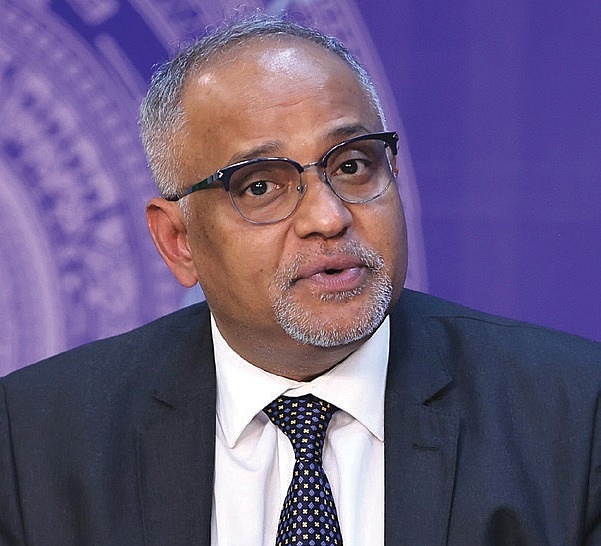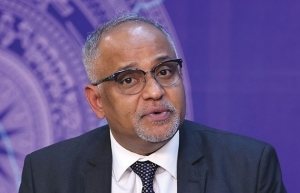A strategy fit for success to ensure 2024 targets are met
Vietnam’s economy has grown 5.05 per cent in 2023. What is your comment on this rate compared to other economies in the region?
 |
| Shantanu Chakraborty, Vietnam country director for the Asian Development Bank |
It was a challenging year for the Vietnamese economy. The Asian Development Bank (ADB) has revised its growth projection for the country to 5.2 per cent for the year, down from an earlier 5.8 per cent forecast. Strong headwinds came from the global economic slowdown and collapsed external demand in 2023, while the government has been proactive in its policy responses to maintain recovery.
Inflation is projected to be 3.8 per cent for the year, considering the core inflation (excluding controlled price items) at 4.3 per cent while the consumer price index was only at 3.2 per cent by the end of November.
The key factors that kept the economy resilient in 2023 included domestic recovery of services, including tourism, as well as public spending, although the performance could have been better.
A broader look to the Southeast Asia region, Vietnam’s performance is still quite positive. The ADB also revised down the growth forecast of countries in Southeast Asia’s region to 4.3 per cent from the earlier 4.6 per cent projection. The revisions reflect the continued lackluster performance of manufacturing in the subregion’s more open, bigger, and trade-oriented economies such as Malaysia (GDP forecast 4.2 per cent), Thailand (GDP forecast 2.5 per cent).
The growth forecasts for Indonesia and the Philippines are maintained at 5 and 5.7 per cent, respectively, as both showed robust growth momentum, despite tighter financial conditions. Services and construction in Singapore continue to grow strongly, and the country’s growth forecasts are unchanged at 1.0 per cent.
What is your take on the effectiveness of Vietnam’s monetary and fiscal policy in 2023?
We should recognise the government’s efforts in their macroeconomic policy responses in the midst of fast-changing circumstances to overcome economic headwinds.
On the monetary policy front, Vietnam’s monetary policy management in 2023 has performed remarkably in controlling inflation effectively, preserving the price stability at the start of the year, while quickly adjusting to signs of weakness in the growth performance with four rounds of rate reductions by June 2023 to support the economy.
Vietnam was among the first countries to cut policy interest rates amid easing inflation and weakened economic performance. However, the substantial interest rate difference between the Fed’s fund rate and Vietnam’s policy rates, compounded by the strengthening of the US dollar index, put significant pressure on the VND-USD exchange rate. Vietnam’s central bank has accordingly increased the band and flexibly managed the movement of the exchange rate to stabilise the market.
On the fiscal policy side, the government realised the importance of fiscal policy in boosting economic activity. We saw various measures of the government, not only in boosting public investment, but also in keeping VAT cut by 2 per cent, as well as several fiscal measures to support businesses. However, their effectiveness still has room for improvement.
Public investment disbursement has significantly added value to domestic consumption in 2023, which is one of the key growth drivers. It has boosted retails sales and consumer services by 9.6 per cent in November 2023 compared to the same period in 2022.
For 2024, the National Assembly set a growth target of 6-6.5 per cent. What will be key to reaching this?
The ADB maintained its projection for Vietnam’s growth in 2024 at 6 per cent, assuming certain recovery of the external sector, while domestic recovery could regain momentum, compared to 2023. An important driver will be prudent macroeconomic stability resulting from proactive monetary and fiscal policies. But this alone would not be enough. Public investment, domestic consumption, and export recovery are the three main growth drivers of Vietnam’s economy in 2024.
In priority order, public investment as a fiscal stimulus measure should be prioritised because Vietnam still has fiscal room. Public debt is well controlled at around 38 per cent of GDP as of end-2022. Vietnam should accelerate the disbursement of a sizable public investment of around $30 billion. This will directly support contracting industries such as construction and mining and provide more employment opportunities. Policy implementation could be more effective, with efficient public investment spending in quality infrastructure to stimulate economic activities.
It is also critical to swiftly implement other fiscal measures, like keeping the VAT rate cut until the end of 2024, not just to June 30. The government could also consider social safety measures to support the labour market, including unemployment allowance or reskilling incentives.
Secondly, domestic consumption can be boosted with increased demand from fiscal measures, supported by monetary policy to keep interest rates relatively low. Coordinated policy can effectively support economic recovery, considering relative price stability and weak demand.
In the near term, the monetary policy should be accommodative and fiscal policy expansionary. Slow credit growth indicates that monetary policy loosening must be coordinated with fiscal policy implementation to effectively boost economic activities.
Lastly, while the global market is expected to continue to face challenges over 2023-2024, it is an opportunity for Vietnam to strengthen its competitiveness and value creation in global production networks to improve its exports. This could be supplemented by stronger reforms to the business environment, further strengthen attraction of foreign investment inflows, and enhance competitiveness to gain trade demand recovery in 2024.
What challenges do you see for the economy in 2024?
Based on the ADB’s latest assessment, we’re seeing uneven development in the major economies, thus creating uncertainties for the Asia-Pacific region’s outlook. Going into 2024, it is projected that the global economy will weaken, with slower growth than 2023. This means stronger headwinds for Asian economies, especially those that are export-oriented like Vietnam. Countries need to look for alternative growth drivers from their domestic market.
These uncertainties of the global economy would still weigh on Vietnam’s economy in 2024. This means that its external demand is unlikely to significantly recover, despite positive signs recently. Therefore, Vietnam’s policies should be more proactive to stimulate domestic demands and improve the business climate.
The good news is they can build on positive experience in monetary policy, strengthening coordination for effective implementation.
 | Vietnam's economy likely to boom in H2: expert Vietnam’s economy is likely to strongly recover in the second quarter of 2023, said Tim Leelahaphan, Economist for Thailand and Vietnam at Standard Chartered. |
 | Achievable economic goals still in sight for Vietnam Vietnam’s economy grew 4.24 per cent in the first nine months of the year. Shantanu Chakraborty, country director for Vietnam of the Asian Development Bank, spoke with VIR’s Thanh Dat about how growth can be improved. |
 | Vietnam's manufacturing expected to grow in 2024 Thanks to hopes for a recovery in demand both domestically and in export markets, plus business expansion plans, manufacturing is forecast to increase this year, according to S&P Global. |
What the stars mean:
★ Poor ★ ★ Promising ★★★ Good ★★★★ Very good ★★★★★ Exceptional
Related Contents
Latest News
More News
- Main drivers for Vietnam’s digital economy future (December 03, 2025 | 11:35)
- Pivotal stage of growth paves way for rise in M&As (December 03, 2025 | 10:00)
- Positive projections for M&A interest from Thailand (December 03, 2025 | 09:40)
- Manifesting the first line of defence in cybersecurity (December 03, 2025 | 09:00)
- The transformational role AI can play in accounting arena (December 03, 2025 | 08:00)
- Unlocking 5G-AI potential in Singapore (December 03, 2025 | 08:00)
- Data-driven strategies vital for a fast-evolving nation (December 02, 2025 | 09:41)
- Policy to practice: how Vietnam can lead the region (November 26, 2025 | 16:03)
- Mobilising private capital at scale vital for climate battle (November 26, 2025 | 15:36)
- VILAF and Yoon & Yang launch Vietnam - Korea Practice Unit (November 26, 2025 | 15:16)

 Tag:
Tag:




















 Mobile Version
Mobile Version